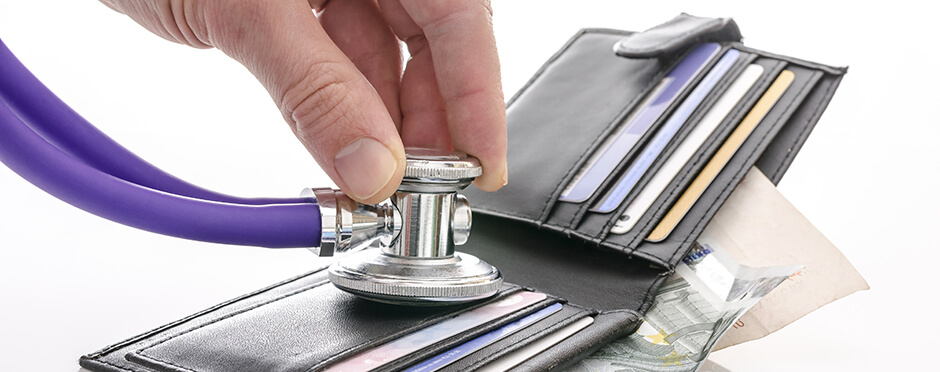
Health and wellness August 27, 2015 By
October is National Substance Abuse Awareness month, and with school back in full swing, I agree there is no better time than now to bring awareness to this topic.
Substance abuse in America is real and the impact is great. Illicit drug use is up 8.3 percent in America since 2002. Abuse of and addiction to alcohol, nicotine, and illicit and prescription drugs costs Americans more than $700 billion a year in increased health care costs, crime, and lost productivity according to the National Institute on Drug Abuse (NIDA). Every year, illicit and prescription drugs and alcohol contribute to the deaths of more than 90,000 Americans; tobacco is linked to an estimated 480,000 deaths per year.
Alcohol is the most commonly abused substance in America, followed by marijuana and prescription drugs (for uses other than prescribed). Prescription drug abuse is rising and is particularly a problem for teenagers and young adults because prescription drugs are more accessible.
Prevention is the most effective strategy for combating substance abuse. Prevention, especially with teens, should start at home. The NIDA offers these parenting prevention tips:
- Good communication between parents and children is the foundation of strong family relationships. Developing these skills helps parents catch problems early, support positive behavior, and stay aware of what is happening in their children’s lives. If you encounter your child abusing drugs, follow these CALM steps:
C – Control your thoughts and your actions.
A – Assess and decide if you are too upset to continue.
L – Leave the situation if you are feeling too angry or upset.
M – Make a plan to deal with the situation within 24 hours. - Encouragement is key to building confidence and a strong sense of self and helps parents promote cooperation and reduce conflict. Many successful people remember the encouragement of a parent, teacher, or other adult. Consistent encouragement helps youth feel good about themselves and gives them confidence to try healthy new activities, develop new friendships, tackle difficult tasks, and explore their creativity.
- Negotiating solutions offers parents a way to work together with their children to solve problems, make changes, promote and improve cooperation, learn to focus on solutions rather than problems, think through possible outcomes of behavior, and develop communication skills.
- Setting limits helps parents teach self-control and responsibility, show caring, and provide safe boundaries. It also provides youth with guidelines and teaches them the importance of following rules. First set rules, and then follow up.
- Supervision is the centerpiece of effective parenting during childhood. When youth begin to spend more and more time away from home, monitoring their behavior and whereabouts is challenging. Supervision helps parents recognize developing problems, promote safety, and stay involved.
- Childhood is a period of major growth and change. Youth tend to be uncertain about themselves and how they “fit in,” and at times they can feel overwhelmed by a need to please and impress their friends. These feelings can leave children open to peer pressure. Knowing your child’s friends and peers helps parents improve communication, reduce conflict, and teach responsibility.
Being able to recognize the signs and symptoms of drug abuse can help parents identify an issue or need for intervention. Signs and symptoms of drug abuse vary depending on the type of drug being abused. Narconon International provides the following signs and symptoms of drug abuse:
- Sudden change in behavior
- Mood swings; irritable and grumpy and then suddenly happy and bright
- Withdrawal from family members
- Careless about personal grooming
- Loss of interest in hobbies, sports, and other favorite activities
- Changed sleeping patterns
- Red or glassy eyes
- Sniffly or runny nose
Many of the symptoms listed can be indicators of other health issues, including depression.
Addiction is treatable and does not have to define someone or completely take over their life. This chronic disease can be managed successfully. Research shows that combining behavioral therapy with medications, when appropriate, is the best way to ensure success for most patients. Treatment methods must be personalized to address each patient’s drug use patterns and drug-related medical, psychiatric, and social problems.
Despite the presence of effective treatment options, only 2.3 million people age 12 or older received treatment at a specialty substance abuse facility in 2011 out of the 21.6 million people who needed it. Supporting legislation that promotes increased access to effective addiction treatment and supports insurance parity can help decrease this treatment gap. Raising awareness of substance abuse and working to reduce the stigma surrounding getting help to treat it can also be helpful.
It is imperative to approach someone who abuses drugs with sensitivity and care. Consulting a mental health provider or physician for help with addressing substance abuse is recommended. Many employers, including First United, offer employee assistance programs that provide free and confidential counseling. It is advised to only enlist the help of mental health providers who are specifically trained in substance abuse or addiction counseling.
Free help (in English and Spanish) for any individual or family facing mental health disorders and substance abuse can be accessed 24 hours a day by calling SAMHSA’s (Substance Abuse and Mental Health Services Administration) national help line at 1-800-662-HELP (4357).




